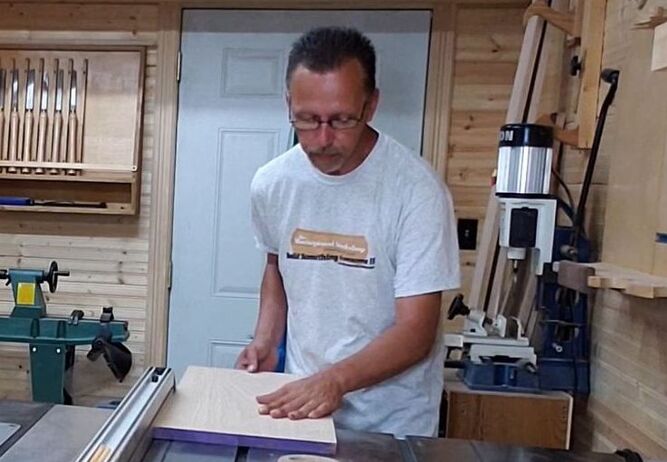 The first time I cut a tenon I started by taking my time marking it out with my marking gauge, then with complete confidence I made my cuts and removed the waste material and after a little clean up I test fit the tenon into the mortise only to discover the shoulders of my tenon were out of square, forcing me to fuse around with my shoulder plane until I finally achieved a good square fit. This problem stayed with me for sometime, I would cut a tenon and then have a problem with the shoulder not being square. I tried using different marking gauges thinking maybe this was the problem, trying wheel gauges, knife gauges but nothing seemed to make a difference. Eventually I realized the problem was never in the marking gauges, it was in the material. When using a marking gauge to mark tenon shoulders the gauge references from the end of the board, and if the end of the board is not true it will cause the shoulder line to be out square, and it doesn't take much to have an issue. But if you reference from the side of a board these marks will be immensely accurate. So what I started doing is using my starrett and a marking knife to lay out my tenon shoulders referencing from the side of the board. Since I started created tenons this way I no longer have fit issues with my mortise and tenon joints.
0 Comments
 One of the most common questions is how do I build this thing ? This table, box, chair or whatever this thing might be. Honestly just build it. The bottom line is the knowledge of how to build something comes from building it and the more you build it the better you will be at it. Nothing is a better teacher than repeating the same task over and over again, especially with the basics of woodworking. And over thinking it will almost always put a fast ending to what would have normally been a great idea. As woodworkers we always push our selves to try and be better than the last thing we created and we should, because this is how we grow both in knowledge and ability. But as a person building something for the very first time ever, it can be intimidating when you look at the way advanced woodworkers do things. Mortises, haunched tenons, dovetails and even the more common half blind dove tail is a lot to understand when you have no knowledge of any of it. My best advise to the first time woodworker is to just do what works for you, then do it again and again. This is how you gain the knowledge your looking for and grow in this craft. Because there is no rule that says you have to build anything a certain way, if there was things like the Maloof joint would have never happened. Just don't over think it and do what works for you, and when your done you will be glad you did. |
The Shavingwood Workshop Blog
Archives
June 2024
Categories |

 RSS Feed
RSS Feed
